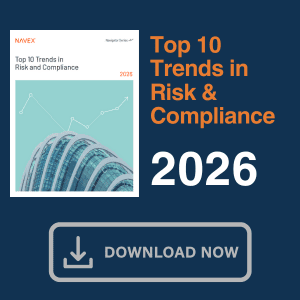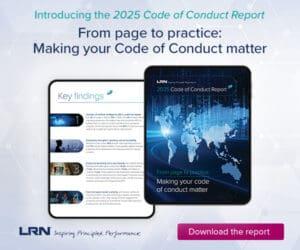The CTA changes what constitutes beneficial ownership and establishes more robust automated data collection. In addition, it increases responsibilities and incentives for employees to blow the whistle on money-laundering activity. Fox Rothschild’s Joshua Ashby and Kimberly Kwan discuss.
With the New Year, the U.S. welcomed newly elected president Joe Biden. It is expected that this administration will ramp up enforcement on white-collar crimes. On January 1, 2021, Congress gifted the incoming administration with a new tool to do so by passing the Anti-Money Laundering Act, which the Department of Justice, Department of Treasury and federal financial regulators can use to clamp down on money laundering.
Money laundering is taking funds that were acquired through illicit activities and trying to introduce them into the legitimate stream of commerce in a manner that conceals the illegal activities that were used to obtain the funds. Anti-money laundering legislation refers broadly to an entire body of laws relevant to the prevention of money-laundering activities.
New Requirements for “Reporting Companies” Under the Corporate Transparency Act
Before the passage of the beneficial ownership information requirements under Sec. 6401-6403 (the Corporate Transparency Act), any person could incorporate or form a company in the U.S. without having to disclose beneficial ownership data to the state incorporation or formation authority. Now, this new regulation requires all “reporting companies” to file reports with the Treasury Department’s Financial Crimes Enforcement Network (FinCEN), identifying all “beneficial owners.” This term refers to individuals who directly or indirectly control the reporting company or own 25 percent or more of the ownership interests of the reporting company. Under the new regulations, reporting entities must also identify “applicants,” or individuals who are filling an application to form or register a reporting company.
However, there are many types of entities that are exempt from the requirements of the CTA, including public companies; governmental entities; banks and bank holding companies; credit unions; broker dealers; registered investment companies; registered investment advisers; insurance companies; registered public accounting firms; public utilities; certain pooled investment vehicles; 501(c) entities; companies with more than 20 full-time employees in the U.S., more than $5 million in gross receipts or sales, and an operating presence at a physical office in the United States; and entities owned or controlled by one or more of such exempt entities.
Cross-Sector Collaboration: In-House Compliance and Supervision
One interesting aspect of the Corporate Transparency Act is it both places new obligations on reporting companies and also confers responsibilities on the companies’ employees to help enforce the rule. The companies’ lawyers, bankers or accountants are often accomplices in helping clients engage in money laundering. Now, employees cannot blindly follow client demands or they risk being held liable in assisting the company in moving illicit proceeds. The Secretary of Treasury now incentivizes whistleblowing employees up to 30 percent of a recovered fine or forfeiture for reporting violations.
International Response and Collaboration
The Financial Action Task Force (FATF), of which the United States is a member, has long criticized the U.S. for its failure to address FATF standards on collection of company beneficial ownership data dating back to 2006. The beneficial ownership information reporting requirements specifically state an intended purpose for bringing U.S. reporting requirements and transparency regarding ownership structures more in line with international standards. More specifically, in the interest of international cooperation, the U.S. has expressly adopted an information reporting regime and granted authority to enable greater information sharing internationally in the hope that such collaborative efforts will deter or intercept money-laundering activities that may in fact otherwise leverage international borders.
Correspondent Accounts
These new anti-money laundering rules include updates to international protocols, permissions and authority related to the sharing of information and also related to the reach of federal authority to information across international boundaries. Most notably, an almost Trojan effect has been created through correspondent accounts. These are often single bank accounts opened in a foreign country that are used to conduct business in that physical location. The primary account holder’s main accounts typically remain with the original bank. The original bank opens a correspondent account in order to facilitate transactions locally. Under the new anti-money laundering rules, if a criminal investigation leads to subpoena, federal authorities will have complete lateral visibility into all accounts that an individual or organization may have at that bank.
Pause to fathom the implications of this new tool for a moment. The potential reach of such investigative authority is extraordinary. Most financial transactions are done electronically. As a result, such transactions can often be tracked covertly, even when open traceability may be difficult.
A notable exception to this ability for tracing the movement of funds is the use of internal bank transfers, which may be initiated through direction of an account holder provided to the bank in person. When the transfer of funds internal to a bank occurs, the typical electronic records and corresponding visibility cannot reliably identify the movement of funds. However, under the correspondent account’s expanded reach for access to information, everything becomes visible related to the correspondent account. If the bank refuses to cooperate when subpoenaed, the penalties are severe. It could lead to all of the bank’s accounts in the U.S. to be closed within 10 days, followed by expulsion of all operations by that bank from the U.S. for all accounts and all account holders.
Even banks that are perceived as actively engaged or complicit in the handling of monies obtained through illegal activities will still generally control more assets related to legitimate activities. Consider for example, any bank whose primary activities that were actually related to money laundering would itself, independent and apart from banking secrecy or anti-money laundering rules, already be a highly visible target for the U.S.
Effects and Uncertainties of the Beneficial Ownership Information Exchange
The new reporting requirements regarding beneficial ownership information will generate a massive new data set ripe for mining. The authors of the Corporate Transparency Act estimate about two million business entities are formed annually in the U.S. Coupled with all of the existing business entities that have already been formed, the raw data that will be generated under the legislation is enormous.
Some people have expressed concern regarding the potential burden that complex information reporting requirements could create. However, such concerns remain speculative pending regulations that FinCEN and other administrative bodies have been tasked to generate and implement no later than January 1, 2022. In fact, moving to a broader perspective spanning anti-money laundering laws that fully encompass the Corporate Transparency Act, many directives have been included in the language of the AML Act for the purpose of reducing unnecessarily cumbersome information reporting processes. A recurring theme throughout the AML revisions is a sense that Congress expects FinCEN to streamline data submission, aggregation and feedback in order to maximize the exploitable value of data.
The act also contains stipulations that may streamline suspicious activity reporting. Congress has directed FinCEN together with the General Accounting Office to conduct a study into potential opportunities for increasing efficiency and efficacy of suspicious activities that are being reported. The study will address thresholds for determining suspicion, as well as identifying innovative technology that could even automate the submission of certain types of reports based on suspicious activities at a lower level.
Although perhaps counterintuitive at first, the potential value for mining this data greatly outstrips the speculative concerns regarding cost of compliance or administrative burden it may create. In the abstract, a thorough cost-benefit analysis is a multidisciplinary exercise spanning economics, data science and geopolitics. In the context of the Corporate Transparency Act, the AML Act and the National Defense Authorization Act for Fiscal Year 2021, Congress has now adopted a national defense strategy. One cornerstone of this strategy is composed of the tandem pairing of anti-money laundering and artificial intelligence. In other words, AI and AML now represent a fourth of the divisions identified in the U.S. National Defense Authorization Act by Congress.
The data collected by FinCEN through the Corporate Transparency Act regarding beneficial ownership information will be included as part of the new FinCEN Exchange, which is newly established under the AML Act of 2020. The FinCEN Exchange is a voluntary public-private information sharing partnership that includes financial institutions. It is intended to effectively and efficiently combat money laundering, terrorism financing and organized crime. It also has the further purpose of promoting innovation and technical advances related to information and data. Information in the database cannot be used for any other purpose.
In addition to the new requirement that corporations report on the beneficial ownership of equity in companies, financial institutions are now required to provide the government full visibility into their algorithms used for compliance purposes. Given the incredible complexity and evolving nature of algorithms, the tension between a government authority’s desire to see the inner workings of decision-making processes and the market’s need for strict confidentiality due to the enormous capital investment typically associated with algorithmic development – and in light of recent events such as the Solarwinds security breach – companies may be skeptical of the government’s ability to protect even highly sensitive information unless classified. Any government access to such information has been exempted from Freedom of Information Act (FOIA) requirements for disclosure. But, absent adequate assurances and demonstrated capability, compliance under basic fiduciary duties and the safeguarding of valuable company assets may be in tension with certain disclosure requirements to the extent that such disclosure might introduce weaknesses into a company’s overall security ecosystem.
From a compliance perspective, companies should be actively engaged in the process with government authorities in determining what back-end visibility is actually necessary to affect the purposes of the AML Act. Stricter protocols regarding compartmentalization of algorithmic functionality may be necessary. As the role of artificial intelligence features more prominently into decision-making processes, the perceived need of regulatory authorities for greater visibility and closer scrutiny of the underlying process for developing such tools is likely to increase as well.
Final Thoughts
The ability of this new regulation to tackle money laundering is yet to be determined. But by January 2022, owners of reporting companies will no longer enjoy the same level of confidentiality as they once did. Entities not exempt from the reporting requirements of the Corporate Transparency Act will need to identify each instance of beneficial ownership and each applicant. Corporate counsels, accountants and bankers will in part be expected to provide gatekeeper oversight, and failure to report on the company’s violations may expose such individuals to personal liability.



 Joshua Ashby is a partner in the Corporate Department at
Joshua Ashby is a partner in the Corporate Department at  Kimberly Kwan is an attorney in the Corporate Department at Fox Rothschild LLP, where she advises clients on a wide range of corporate, venture capital, franchising and private equity matters.
Kimberly Kwan is an attorney in the Corporate Department at Fox Rothschild LLP, where she advises clients on a wide range of corporate, venture capital, franchising and private equity matters.






